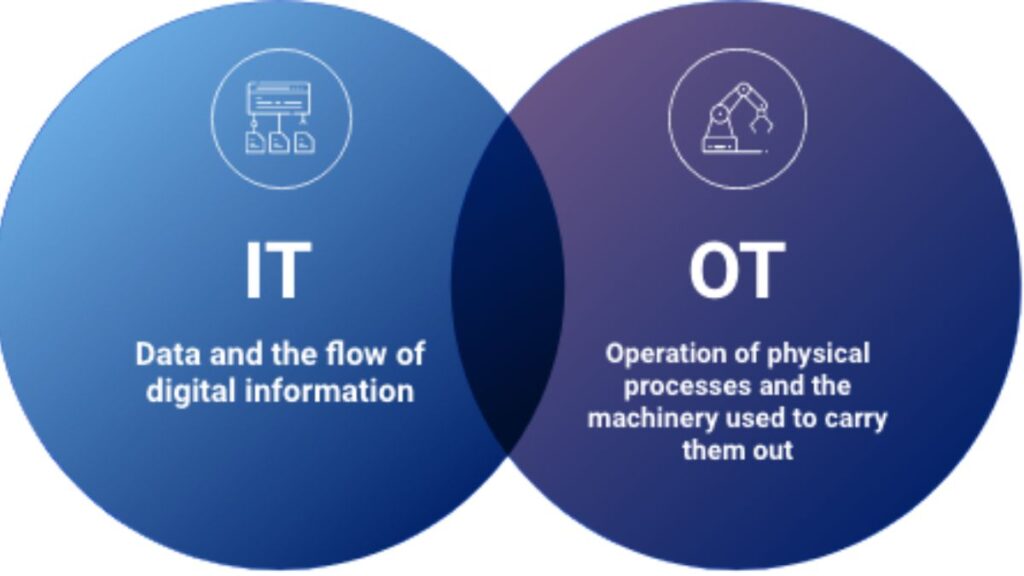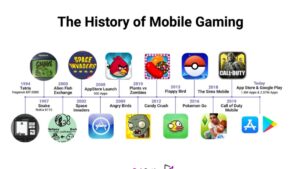In today’s rapidly advancing technological landscape, organizations are continuously searching for ways to improve operational efficiency, reduce costs, and enhance productivity. Two key areas that have traditionally been separate but are increasingly coming together are Information Technology (IT) and Operational Technology (OT). The convergence of IT and OT offers significant potential for businesses, but it also comes with its own set of challenges. This article explores the benefits and challenges of the convergence of IT and OT, providing insights into how organizations can navigate this transition effectively.
Understanding IT and OT
Before delving into the convergence of IT and OT, it’s important to understand what each term represents and how they traditionally functioned within an organization.
Information Technology (IT) refers to the use of computer systems, software, and networks to process, store, and manage data. IT is primarily concerned with managing information and communication systems and is a fundamental part of any modern business. IT systems enable activities such as data analytics, cloud computing, software development, and enterprise resource planning (ERP).
Operational Technology (OT), on the other hand, refers to hardware and software systems that monitor and control physical devices, processes, and events in the operational environment. This includes industrial control systems (ICS), supervisory control and data acquisition (SCADA) systems, programmable logic controllers (PLCs), and other systems that directly interact with machinery, sensors, and physical processes on the factory floor or within critical infrastructure.
Traditionally, IT and OT operated in silos. IT focused on business processes, data management, and communication technologies, while OT dealt with physical processes and operational efficiencies. However, with the rise of Industry 4.0, which emphasizes automation, data exchange, and smart technologies, the lines between IT and OT are becoming increasingly blurred.
The Benefits of Converging IT and OT
The convergence of IT and OT holds immense potential for organizations, leading to a variety of benefits across different sectors. Below are some of the key advantages.
1. Improved Operational Efficiency
One of the primary benefits of IT and OT convergence is improved operational efficiency. By integrating the two domains, organizations can streamline their processes, reduce downtime, and enhance productivity. Data collected from OT systems, such as sensors and control systems, can be seamlessly transmitted to IT systems for analysis. This real-time data analysis can provide insights into performance, maintenance needs, and potential bottlenecks, allowing companies to make informed decisions and optimize their operations.
For example, in manufacturing, predictive maintenance can be implemented by analyzing data from OT systems to predict when equipment will require maintenance or replacement. This minimizes unplanned downtime, reduces maintenance costs, and ensures the smooth functioning of operations.
2. Enhanced Data Utilization and Analytics
With the convergence of IT and OT, organizations can access a wealth of data that was previously isolated within OT systems. This opens up new opportunities for data-driven decision-making. By integrating OT-generated data with IT-driven analytics tools, companies can gain deeper insights into operational performance, market trends, and customer behaviors.
Advanced analytics techniques, such as machine learning and artificial intelligence (AI), can be applied to large datasets from both IT and OT sources to uncover patterns, optimize processes, and predict future trends. For instance, an energy company might use OT data to monitor power grid performance and IT systems to analyze energy consumption patterns. This enables better decision-making and more efficient resource allocation.
3. Better Risk Management and Security
The convergence of IT and OT allows organizations to implement more robust security measures by applying the cybersecurity tools and protocols used in IT to OT environments. OT systems have traditionally been isolated and less protected, making them vulnerable to cyber threats. By integrating OT with IT systems, businesses can apply advanced security technologies such as firewalls, encryption, and multi-factor authentication to safeguard critical infrastructure.
Additionally, with better data integration, organizations can more easily monitor and identify potential risks or threats across both IT and OT networks. This unified approach to risk management helps companies respond more effectively to emerging threats and ensure business continuity.
4. Improved Collaboration Across Teams
Traditionally, IT and OT teams have operated independently, with little collaboration or shared knowledge. The convergence of these two domains fosters cross-functional teamwork, as IT and OT professionals work together to design, implement, and manage integrated solutions. This collaboration leads to a more holistic understanding of business processes, increased problem-solving capabilities, and faster response times to operational issues.
Furthermore, the alignment between IT and OT teams ensures that technology investments are better coordinated, and the implementation of new systems is more seamless. This results in a more cohesive and agile organizational structure, where technology serves the broader business goals.
5. Cost Reduction
While the initial investment in converging IT and OT systems may be significant, the long-term cost savings are considerable. By optimizing operations through integrated systems, organizations can reduce inefficiencies and avoid unnecessary expenditures. Predictive maintenance, for instance, reduces the need for expensive emergency repairs and extends the lifespan of critical equipment.
Additionally, organizations can consolidate their IT and OT infrastructures, resulting in lower maintenance costs and reduced energy consumption. By automating processes and improving real-time decision-making, businesses can also cut labor costs and minimize human error.
The Challenges of IT and OT Convergence
While the benefits of IT and OT convergence are clear, there are several challenges that organizations must navigate to successfully integrate these two domains.
1. Security and Cybersecurity Concerns
The convergence of IT and OT introduces new security risks, as OT systems were not originally designed to handle the same cybersecurity challenges that IT systems face. Many OT systems are legacy systems that were not built with modern security protocols in mind, making them more vulnerable to cyberattacks.
The increasing connectivity between IT and OT opens up potential entry points for malicious actors. Cyberattacks on OT systems can have serious consequences, including disruptions to manufacturing processes, environmental hazards, or even physical harm to workers. Organizations must invest in robust cybersecurity measures, such as intrusion detection systems, encryption, and continuous monitoring, to protect both IT and OT networks from potential threats.
2. Integration and Compatibility Issues
Integrating IT and OT systems can be a complex and time-consuming process. OT systems often use specialized protocols and technologies that are not compatible with IT systems. Furthermore, many OT devices are older and may lack the flexibility or connectivity needed for seamless integration.
Organizations must carefully assess their existing IT and OT infrastructures and develop strategies for overcoming compatibility issues. This might involve upgrading legacy OT systems, implementing middleware to bridge the gap between systems, or investing in new technologies that can facilitate smoother integration.
3. Skill Gaps and Training
The convergence of IT and OT requires a new set of skills that span both domains. Many organizations struggle to find professionals with expertise in both IT and OT, and existing employees may need extensive training to understand how to work with integrated systems.
Organizations must prioritize upskilling their workforce and fostering collaboration between IT and OT professionals. This might involve offering training programs, certifications, or hiring new talent with expertise in both areas. Developing a culture of continuous learning and cross-functional collaboration is essential for the successful integration of IT and OT.
4. Organizational and Cultural Barriers
IT and OT departments have historically operated in silos, each with its own culture, goals, and workflows. The convergence of these two domains can face resistance from employees who are accustomed to working in separate environments. Overcoming these cultural and organizational barriers requires strong leadership, clear communication, and a shared vision for the future of the organization.
It’s important for leaders to foster a collaborative culture and encourage the exchange of knowledge between IT and OT teams. Organizations must also develop policies and processes that align the objectives of both domains to achieve common business goals.
5. High Initial Investment
The integration of IT and OT systems often requires significant upfront investment in new technologies, infrastructure, and training. For smaller organizations or those with limited resources, this can be a major hurdle. Additionally, there may be hidden costs associated with the transition, such as the time required to upgrade systems and integrate new solutions.
Organizations should carefully assess the return on investment (ROI) for IT and OT convergence and develop a clear roadmap for implementation. While the long-term benefits are substantial, businesses must be prepared for the initial costs associated with the integration process.
Conclusion
The convergence of IT and OT offers tremendous benefits for organizations looking to improve operational efficiency, enhance data utilization, strengthen security, and reduce costs. However, it also presents significant challenges, particularly in terms of security, system integration, skill development, and organizational change. By addressing these challenges head-on and fostering collaboration between IT and OT teams, businesses can successfully navigate the complexities of this convergence and unlock its full potential. As technology continues to evolve, the integration of IT and OT will likely become an increasingly vital aspect of business success in the digital age.



